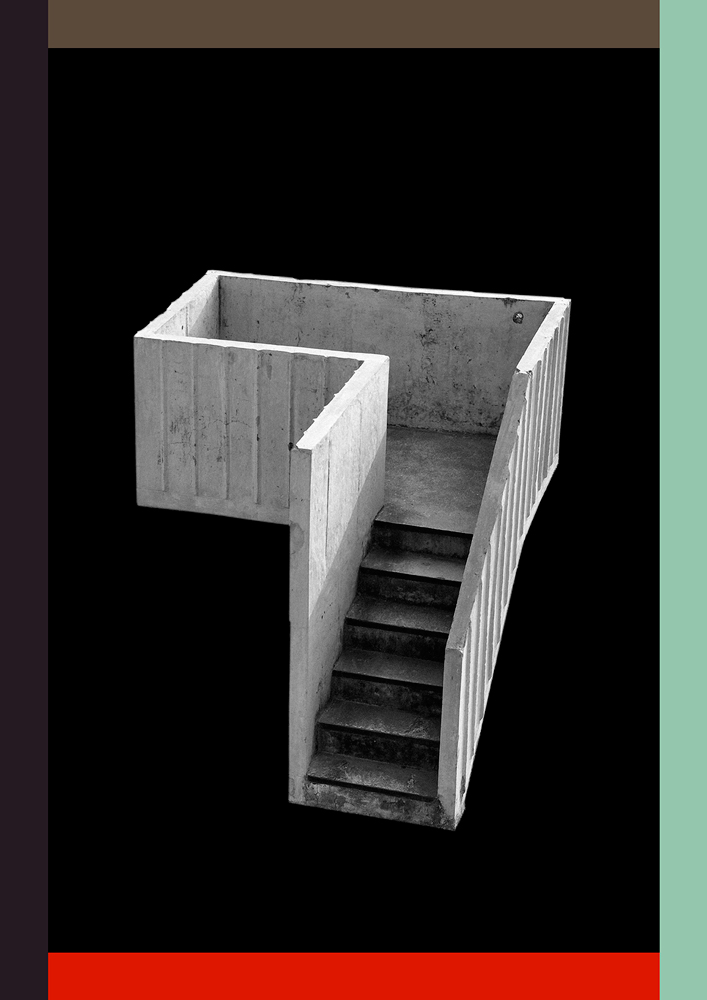



IF COLORS COULD SPEAK (#4, #6, #7, #10)
2017
Archival pigment print on Fine Art Photo Rag paper
84,1 x 59,4 cm each
![]()
IF COLORS COULD SPEAK
2017
Exhibition view
Leopold Musuem Vienna
The central motif of the series If Colors Could Speak presents an architectural piece derived from the utopian planned city Chandigarh in India, conceived by Le Corbusier during the 1950s. A speaker’s podium, poured in concrete in a brutalist manner, floats as a futuristic relic of a failed Modernist utopia against the backdrop of a black void.
Using this dystopian fragment of the what remains of Chandigarh is today, Kay Walkowiak once more investigates into what originally was a euphoric design how people could live together. The colors employed individually across the pieces of the series are derived from a color palette, developed by Le Corbusier, suggesting a minimum of diversity and individual expression in an otherwise conformist societal vision. What if Colors Could Speak?
2017
Archival pigment print on Fine Art Photo Rag paper
84,1 x 59,4 cm each

IF COLORS COULD SPEAK
2017
Exhibition view
Leopold Musuem Vienna
The central motif of the series If Colors Could Speak presents an architectural piece derived from the utopian planned city Chandigarh in India, conceived by Le Corbusier during the 1950s. A speaker’s podium, poured in concrete in a brutalist manner, floats as a futuristic relic of a failed Modernist utopia against the backdrop of a black void.
Using this dystopian fragment of the what remains of Chandigarh is today, Kay Walkowiak once more investigates into what originally was a euphoric design how people could live together. The colors employed individually across the pieces of the series are derived from a color palette, developed by Le Corbusier, suggesting a minimum of diversity and individual expression in an otherwise conformist societal vision. What if Colors Could Speak?